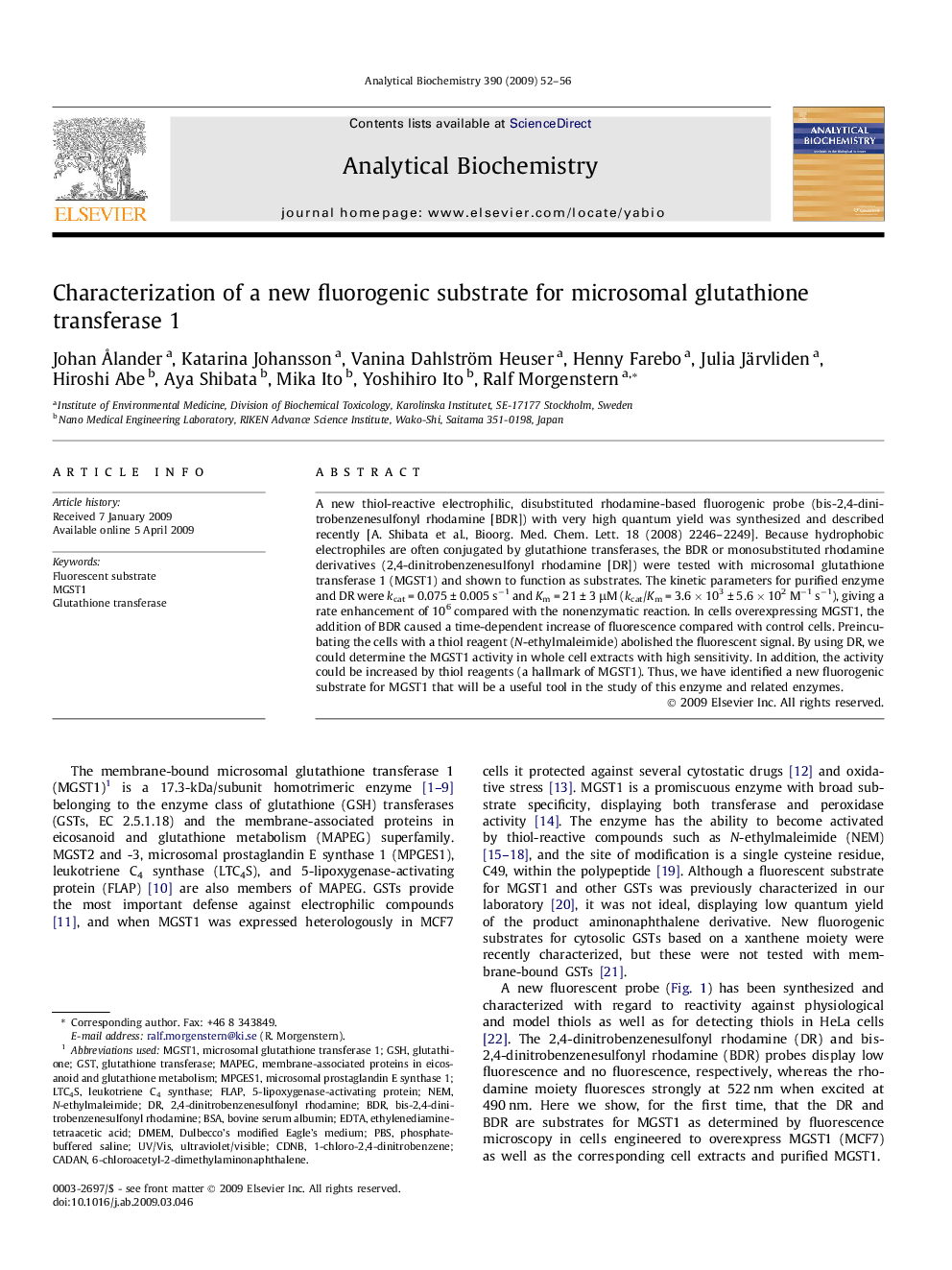| Article ID | Journal | Published Year | Pages | File Type |
|---|---|---|---|---|
| 1174212 | Analytical Biochemistry | 2009 | 5 Pages |
A new thiol-reactive electrophilic, disubstituted rhodamine-based fluorogenic probe (bis-2,4-dinitrobenzenesulfonyl rhodamine [BDR]) with very high quantum yield was synthesized and described recently [A. Shibata et al., Bioorg. Med. Chem. Lett. 18 (2008) 2246–2249]. Because hydrophobic electrophiles are often conjugated by glutathione transferases, the BDR or monosubstituted rhodamine derivatives (2,4-dinitrobenzenesulfonyl rhodamine [DR]) were tested with microsomal glutathione transferase 1 (MGST1) and shown to function as substrates. The kinetic parameters for purified enzyme and DR were kcat = 0.075 ± 0.005 s−1 and Km = 21 ± 3 μM (kcat/Km = 3.6 × 103 ± 5.6 × 102 M−1 s−1), giving a rate enhancement of 106 compared with the nonenzymatic reaction. In cells overexpressing MGST1, the addition of BDR caused a time-dependent increase of fluorescence compared with control cells. Preincubating the cells with a thiol reagent (N-ethylmaleimide) abolished the fluorescent signal. By using DR, we could determine the MGST1 activity in whole cell extracts with high sensitivity. In addition, the activity could be increased by thiol reagents (a hallmark of MGST1). Thus, we have identified a new fluorogenic substrate for MGST1 that will be a useful tool in the study of this enzyme and related enzymes.
